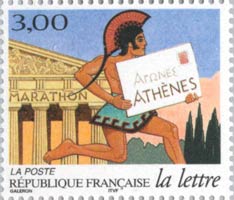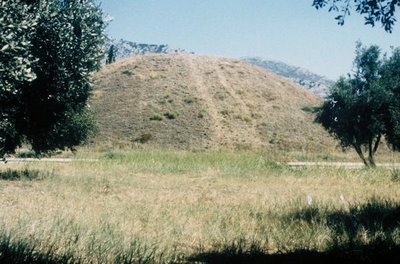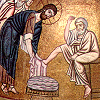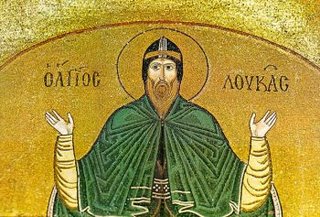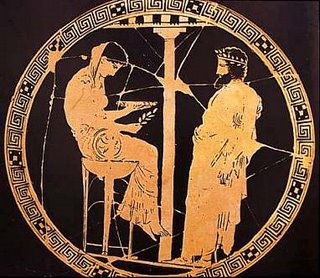The Island of Aegina and the reconstructed Trireme
This will be my last entry on this blog. Tomorrow I greet the tour group of students from Lee University at the Athens airport. So I will begin making daily entries on the blog for that trip which you can see at http://leeu2006.blogspot.com/
Today we left the hotel early and rode on the bus to the port city of Piraeus. We then boarded a ferry bound for the island of Aegina. The bus drove on under the deck of the ship. The voyage lasted about 1 hour.
Along the way we got a good view of the harbor of Athens and also the island of Salamis and the straight of Salamis. This was the site of a famous naval battle the Persians and the Athenians. The Athenians used "misinformation" to help them in this battle. They sent a message via a slave that they were intending to the flee the battle. Then the Athenian ships engaged the Persian fleet (actually they used Phoencian ships to comprise their navy) and pulled them into the straights. Then the Athenians could pick them off in small numbers. The Phoencian ships could out run the Athenians in the open sea but the Atheian triremes were more nimble in close quarters. They turn faster and were quicker in the short run. The trireme is a long narrow ship with bronze covering the prow. The ship is the missile or weapon. The Athenians using a crew of about 200 rowers seated in 3 banks of oars (hence the name tri-reme) would maneuver the ship quickly so they could strike the enemy ship broadside so it would take on water and flip over. The crew of about 200 was from the lower classes clled Thetes but they were still citizens of Athens (unlike some movie depictions). The crew on top of the ship was about 30-40. If the trireme was hit it would not sink rather it would flip over trapping the rowers but the crew could swim away but they might be killed in the water or when they landed on shore.This remarkable victory at Salamis was an important turning point in the war with the Persians. At the end of our trip we were able to visit the reconstructed trireme called the Olympias which is on display at the naval shipyards.
When we arrive at the island of Aegina we got on the bus and drove to the site of the temple of Aphaea. This was our "final exam" we were divided into 3 teams and we worked on trying to figure the purpose and construction on the temple without consulting the information on the signs at the site. We were able to do a fair job of figuring the age of the temple early 5th century and that there was more than one phase of use to the temple complex. We also notice a unique water system with a cistenr on the site. The temple was of Doric construction. After our discussions we visited the museum to see many of the items which the German team uncovered at the site.
It is an impressive temple with a beautiful view of the sea.
After our "exam" we drove to the town of Perdika and had lunch. This is a small fishing village. I had some tiny fry fish that reminded me of smelt from Lake Michigan. (yes the head and tails were on the fish, yummy!!)
We stopped to buy pistachos because the island is covered with the trees and famous for these nuts.
It has been a great trip and experience. I have learned a great deal and enjoyed it. I hope you enjoy the blog. Remember that this adventure continues for me with the tour to Turkey and Greece you can see it at http://leeu2006.blogspot.com/
John Wineland
Athens, Greece










